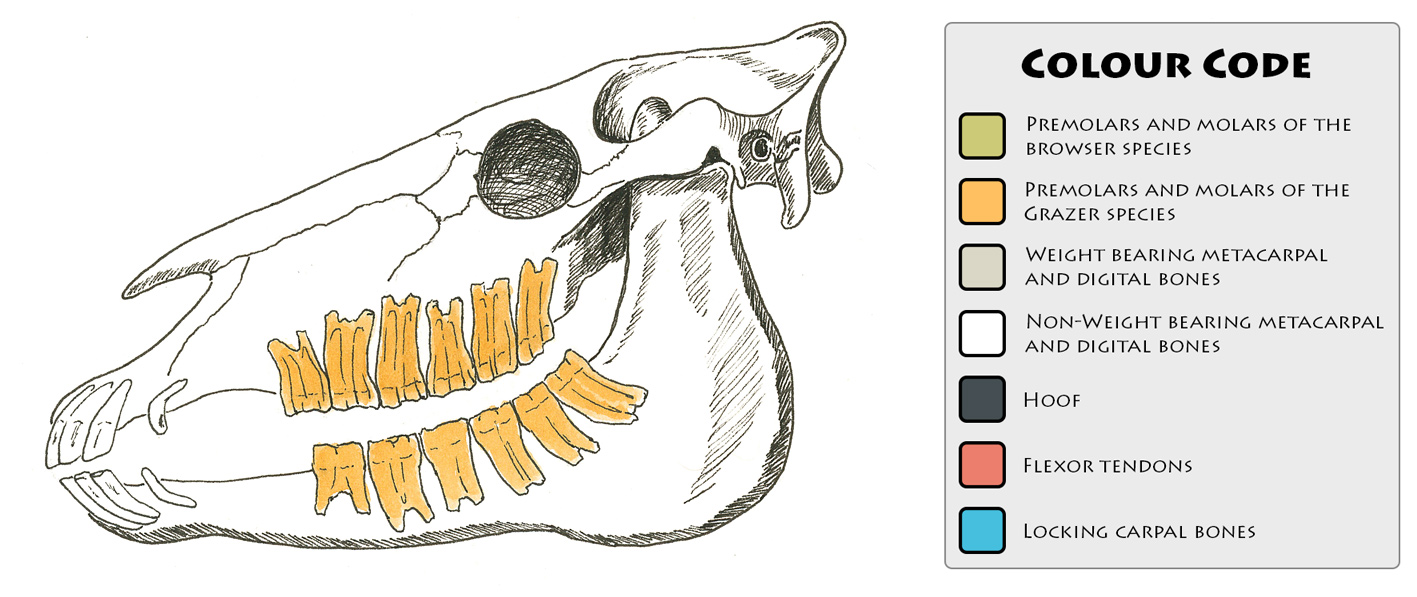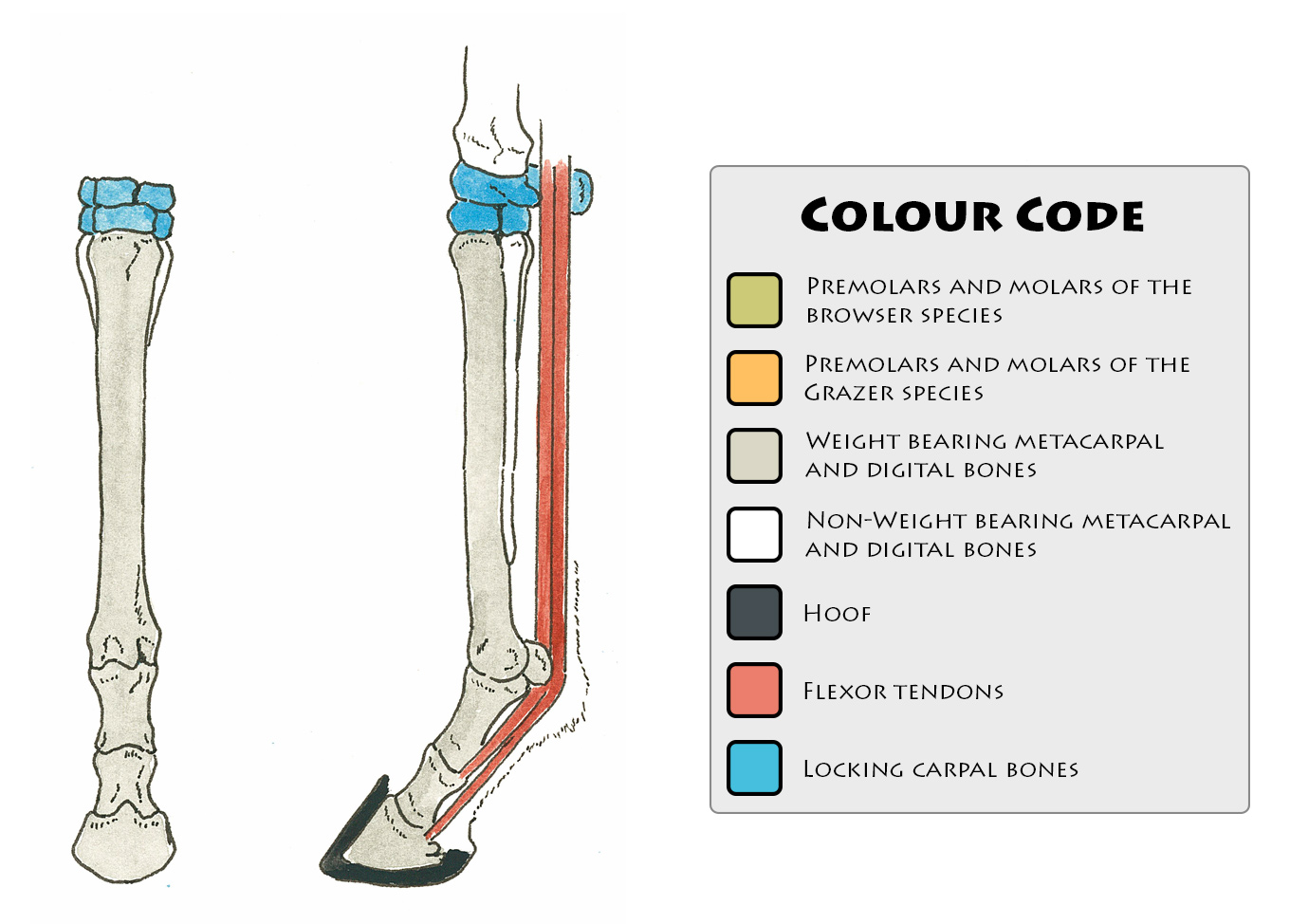 Name: Equus
Name: Equus  Name: Equus
Name: Equus Diet: Grazing Animal
Approximately 1 million years ago, evolution resulted in Equus, the modern horse. It had one toe, and the 2 side toes had developed into the 2 side bones on each leg that we know today as splints. It would have been similar in size to a full-size horse of today and was a grazing animal, living on grasses in open areas. It also had high-crowned teeth. Its last ancestor was Dinohippus. Equus scotti and Equus excelsus, Middle Pleistocene of North America are the source of the “last genuine North American Horses”. The equine family is the only single-toed animal today. The family today includes horses, asses and zebras. With the exception of Australia and Antarctica, Equus fossils have been found on every continent!
 The forms Equus lambei and Equus occidentalis survived until postglacial time periods, about 8000 years ago. In the Stone Age, about 25,000 years ago, evidence shows that humans hunted the horse for an important source of food. Researchers believe that Equus died out after that time period in North America.
The forms Equus lambei and Equus occidentalis survived until postglacial time periods, about 8000 years ago. In the Stone Age, about 25,000 years ago, evidence shows that humans hunted the horse for an important source of food. Researchers believe that Equus died out after that time period in North America.
The horse was domesticated about 6000 years ago and used for transportation and travel, allowing humans to range much further away than they could ever do on foot. Due to this travel, domestication of the horse was widespread throughout Asia, North Africa, and Europe about 5000 years ago and played an important role in warfare, along with its role for transportation and draft work. In 1492, Columbus discovered America and the horse was brought over to the “New World” soon after by Spaniards who came to explore America.  Large numbers of horses were sent over in ships to the settlements and horses once again ran in herds in the Great Plains of North America, in the same area where the evolution of the horse had originated 55 to 58 million years earlier!
Large numbers of horses were sent over in ships to the settlements and horses once again ran in herds in the Great Plains of North America, in the same area where the evolution of the horse had originated 55 to 58 million years earlier!